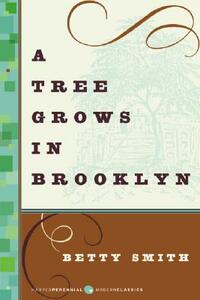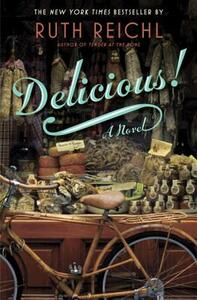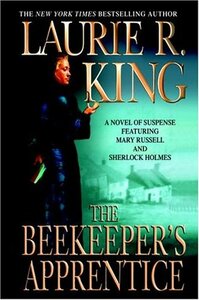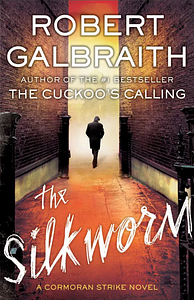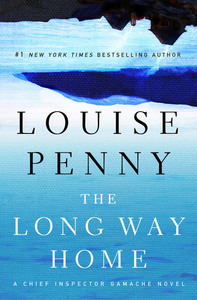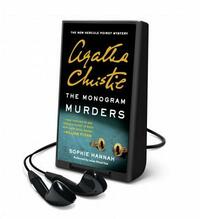Take a photo of a barcode or cover
laurieb755's Reviews (784)
Anytime mention of ""A Tree Grows In Brooklyn" was made, I used to wonder how the book escaped me during my childhood. As a voracious reader, the book never crossed my doorstep nor did I know anyone reading it. Yet, it was one of those books whose title I knew, and I would occasionally wonder, when the title was mentioned, how my reading education had failed me here.
---
What a richly told tale! Moving. Poignant. Loving. And hugely evocative of what I imagine the world was like for my grandparents and great-grandparents, though they lived in the Bronx and Manhattan, and were Jewish and not Irish Catholic. Betty Smith painted a picture as true as I can imagine of life in part of New York at the turn of the 20th century and into the early part of the 1900s through World War I.
---
This morning I was telling my Aunt Joan about reading this book, and she immediately said it was a book she could see herself rereading, having read it as a young girl. (She is in her early 80s.)
---
Thank you to whoever it was whose list it was on - Ann's? Sarah's? - because that is how I wound up borrowing it from the library!
---
What a richly told tale! Moving. Poignant. Loving. And hugely evocative of what I imagine the world was like for my grandparents and great-grandparents, though they lived in the Bronx and Manhattan, and were Jewish and not Irish Catholic. Betty Smith painted a picture as true as I can imagine of life in part of New York at the turn of the 20th century and into the early part of the 1900s through World War I.
---
This morning I was telling my Aunt Joan about reading this book, and she immediately said it was a book she could see herself rereading, having read it as a young girl. (She is in her early 80s.)
---
Thank you to whoever it was whose list it was on - Ann's? Sarah's? - because that is how I wound up borrowing it from the library!
Learned about this book from a blurb in my local library's e-newsletter. Ellen Stimson's chronicle is a combination stand-up comedy routine (perhaps better performed in person) or the basis of a sitcom. Either way, at times I found it difficult to take her seriously, though never did I laugh out loud. Sometimes I wondered how anyone could have such a (what seemed) intentionally calamitous life.
Would I recommend this book? Sure, if you are looking for a quick read, or want to have a sense of what life could be like if you lived out the "I want to live a simple life ____" (fill in the blank with your choice: on a farm, owning a country store… anything that took you out of your current comfort zone and into something you imagine as a more wholesome life style). But as a piece of literature, or a book that gets you delving deep, hmmm, not so much.
Would I recommend this book? Sure, if you are looking for a quick read, or want to have a sense of what life could be like if you lived out the "I want to live a simple life ____" (fill in the blank with your choice: on a farm, owning a country store… anything that took you out of your current comfort zone and into something you imagine as a more wholesome life style). But as a piece of literature, or a book that gets you delving deep, hmmm, not so much.
Not sure who to thank for this one but probably it was my local library's e-newsletter containing a quick description and review of Delicious!
Ruth Reichl - the author's name had a ring of familiarity though I was never a Gourmet reader so am not sure where I would have heard of her; perhaps on a television show?
Am glad I have heard of her now; her writing is delicious and her plot as tasty as your favorite full course meal. I liked the twists and turns, the characters of Sammy and Lulu and Sal & Rosalee, and the descriptions of smells, food and meals that never felt like they were tossed in just to make a salad. Rather, they were fully a part of the story, and without those loving gastronomic delights there would be no story.
This is fare for the reader who likes to think and figure things out, who appreciates a good meal, who likes rich characters with whom you can feel you actually know them, and enjoys a writer who doesn't mince her words.
Have fun! And think about Bertie and the library clues. Ingenious!
Ruth Reichl - the author's name had a ring of familiarity though I was never a Gourmet reader so am not sure where I would have heard of her; perhaps on a television show?
Am glad I have heard of her now; her writing is delicious and her plot as tasty as your favorite full course meal. I liked the twists and turns, the characters of Sammy and Lulu and Sal & Rosalee, and the descriptions of smells, food and meals that never felt like they were tossed in just to make a salad. Rather, they were fully a part of the story, and without those loving gastronomic delights there would be no story.
This is fare for the reader who likes to think and figure things out, who appreciates a good meal, who likes rich characters with whom you can feel you actually know them, and enjoys a writer who doesn't mince her words.
Have fun! And think about Bertie and the library clues. Ingenious!
My brother-in-law included this book on a lengthy list of suggestions for what to read, when queried by my husband. As a Sherlock Holmes fan, I couldn't help but be interested in reading Laurie R. King's book.
At first I was put off by Mary Russell's story telling; her style seemed laborious. But slowly I warmed to her story of how she met Sherlock and developed a relationship with him. I believed her, because her description of Sherlock in his 60s (my my, not far from my age now ;-) ) meshed with how I imagined he would be. And then the pace of the tale picked up. Russell, with the guidance of Sherlock (and the editing of King) became an adept sleuth and teller of tales.
I enjoyed the descriptiveness of locations, events and psyches. I appreciated the barring of souls. And I truly delighted in the unveiling of the mastermind responsible. Confession (not a spoiler): I had a tiny inkling of who this would be, but banished it to the back of my mind until further proof could be obtained.
Thus I have put on reserve at my local library Mary Russell's next grand adventure with Holmes, A Monstrous Regiment of Women.
At first I was put off by Mary Russell's story telling; her style seemed laborious. But slowly I warmed to her story of how she met Sherlock and developed a relationship with him. I believed her, because her description of Sherlock in his 60s (my my, not far from my age now ;-) ) meshed with how I imagined he would be. And then the pace of the tale picked up. Russell, with the guidance of Sherlock (and the editing of King) became an adept sleuth and teller of tales.
I enjoyed the descriptiveness of locations, events and psyches. I appreciated the barring of souls. And I truly delighted in the unveiling of the mastermind responsible. Confession (not a spoiler): I had a tiny inkling of who this would be, but banished it to the back of my mind until further proof could be obtained.
Thus I have put on reserve at my local library Mary Russell's next grand adventure with Holmes, A Monstrous Regiment of Women.
The picture of Gail Caldwell on the inside of the rear jacket has me wondering if she is a friend from somewhere in my past. She looks so familiar, yet I am certain we have never met. And her writing is just as accessible. She could have been sitting in my living room or on my deck, joining me in some snack or delicious meal and sharing her story in person. Yet I know we have only met through my reading her book.
--
I have another friend, Camilla, who was the art teacher at an independent school for many years prior and many years after my five years there. We became friends, and I have a watercolor of hers hanging on the living room wall. It has been there, graced in reds and oranges and desert colors, for over 15 years. Why mention Camilla? She, too, like Gail Caldwell, contracted polio in the year before the inoculations became available. Camilla spent the bulk of her life with a brace on her leg and a limp in her walk.
We were out of touch for a number of years and recently reconnected via LinkedIn, so it was with much surprise and bit of sadness that I learned she did not survive the hip replacement she had undertaken. Two major life impacting events similar to Gail's. Oh yes, and Camilla was single and all her life had dogs; not Samoyeds but little ones whose breed I've long since forgotten. But Camillia was a large woman and I suspect her heart just could not handle the stress of the surgery. Whatever the cause, it seemed Caldwell's memoir reached me at the right moment.
--
Read the book. It is honest and moving and might well be useful if you ever get a hip (or knee) replacement. Let it be a motivator. :-)
--
I have another friend, Camilla, who was the art teacher at an independent school for many years prior and many years after my five years there. We became friends, and I have a watercolor of hers hanging on the living room wall. It has been there, graced in reds and oranges and desert colors, for over 15 years. Why mention Camilla? She, too, like Gail Caldwell, contracted polio in the year before the inoculations became available. Camilla spent the bulk of her life with a brace on her leg and a limp in her walk.
We were out of touch for a number of years and recently reconnected via LinkedIn, so it was with much surprise and bit of sadness that I learned she did not survive the hip replacement she had undertaken. Two major life impacting events similar to Gail's. Oh yes, and Camilla was single and all her life had dogs; not Samoyeds but little ones whose breed I've long since forgotten. But Camillia was a large woman and I suspect her heart just could not handle the stress of the surgery. Whatever the cause, it seemed Caldwell's memoir reached me at the right moment.
--
Read the book. It is honest and moving and might well be useful if you ever get a hip (or knee) replacement. Let it be a motivator. :-)
I am a J.K. Rowling fan, starting with the very first Harry Potter when it was initially published, moving on to The Casual Vacancy and then The Cuckoo's Calling with Cormoran Strike. I came to The Silkworm with solid expectations and, for the most part, they were met. Rowling/Galbraith has a vivid imagination and with a deft handling of words can make that imagination come to life for readers.
Still, something was left wanting with this book. In the interim between the first Cormoran Strike novel and this one, I have read every one of the Inspector Gamache novels by Louise Penny. With much in common, including their love of a good mystery, Rowling and Penny have a marvelous command of geographic locales, and they know their sleuths intimately.
But Louise Penny spoiled me with the richness of her characters, and with the relationships between many of them that span nine novels, with the tenth just out this month (though I haven't yet read it). Alas, on occasion while reading The Silkworm I found myself thinking of Inspector Gamache and his bookmates. While Cormoran Strike is richly portrayed, his lovely associate Robin is still being filled in, and her fiancé Matthew appears very typically drawn. I am hoping that if Cormoran and Robin make a return, Rowling convinces Galbraith to draw out these folks with the same skill and depth that Strike calls out the perpetrators he investigates.
Still, something was left wanting with this book. In the interim between the first Cormoran Strike novel and this one, I have read every one of the Inspector Gamache novels by Louise Penny. With much in common, including their love of a good mystery, Rowling and Penny have a marvelous command of geographic locales, and they know their sleuths intimately.
But Louise Penny spoiled me with the richness of her characters, and with the relationships between many of them that span nine novels, with the tenth just out this month (though I haven't yet read it). Alas, on occasion while reading The Silkworm I found myself thinking of Inspector Gamache and his bookmates. While Cormoran Strike is richly portrayed, his lovely associate Robin is still being filled in, and her fiancé Matthew appears very typically drawn. I am hoping that if Cormoran and Robin make a return, Rowling convinces Galbraith to draw out these folks with the same skill and depth that Strike calls out the perpetrators he investigates.
Ed Catmull writes from his heart as he shares his approach - what worked and what didn't - to providing an environment that fosters creativity and inspiration. The bulk of his book is about his time at Pixar, where he is the President of Pixar Animation as well as of Disney Animation, but there is plenty prior to Pixar, where Ed began to think about the process of managing people as he experienced his own progression from PhD candidate focused on computer animation to manager at the New York Institute of Technology to Pixar and Disney Animation.
Whew, that was a run-on sentence, to be sure! Well, one of the precepts in Ed's strategy is to make your goofs as soon as possible (i.e. choose a direction and then move in that direction) and then change course when you find it necessary to do so (i.e. switch direction as needed). That isn't to say you should proceed willy-nilly without a plan; rather, choose a plan and put it in motion. If that plan needs revision, revise it. So, having written a run-on sentence, all the following ones will be shorter!
In the preface to his book Ed states some of the driving beliefs he has learned about managing people (and these are all quotes):
• …my job as manager is to create a fertile environment, keep it healthy, and watch for the things that undermine it.
• I believe, to my core, that everybody has the potential to be creative–whatever form that creativity takes–and that to encourage such development is a noble thing.
• …there are many blocks to creativity, but there are active steps we can take to protect the creative process.
• I believe the best managers acknowledge and make room for what they do not know–not just because humility is a virtue but because until one adopts that mindset, the most striking breakthroughs cannot occur.
• I believe that mangers must loosen controls, not tighten them. They must accept risk; they must trust the people they work with and strive to clear the path for them; and always, they must pay attention to and engage with anything that creates fear.
• …successful leaders embrace the reality that their models may be wrong or incomplete. Onlyy when we admit what we don't know can we ever hope to learn it.
The remainder of the book relates practical approaches that Ed and his team have developed to foster the above beliefs, both prior to Pixar, and then at Pixar and then again at Disney.
I relished this book for Ed's honesty, for his sharing what, in hindsight, are very practical approaches, and for the story that emerges of Pixar. I take from it lessons for managing my own personal creative process, and also for working with colleagues at school as we collaborate and teach and learn from one another and from our students.
Whew, that was a run-on sentence, to be sure! Well, one of the precepts in Ed's strategy is to make your goofs as soon as possible (i.e. choose a direction and then move in that direction) and then change course when you find it necessary to do so (i.e. switch direction as needed). That isn't to say you should proceed willy-nilly without a plan; rather, choose a plan and put it in motion. If that plan needs revision, revise it. So, having written a run-on sentence, all the following ones will be shorter!
In the preface to his book Ed states some of the driving beliefs he has learned about managing people (and these are all quotes):
• …my job as manager is to create a fertile environment, keep it healthy, and watch for the things that undermine it.
• I believe, to my core, that everybody has the potential to be creative–whatever form that creativity takes–and that to encourage such development is a noble thing.
• …there are many blocks to creativity, but there are active steps we can take to protect the creative process.
• I believe the best managers acknowledge and make room for what they do not know–not just because humility is a virtue but because until one adopts that mindset, the most striking breakthroughs cannot occur.
• I believe that mangers must loosen controls, not tighten them. They must accept risk; they must trust the people they work with and strive to clear the path for them; and always, they must pay attention to and engage with anything that creates fear.
• …successful leaders embrace the reality that their models may be wrong or incomplete. Onlyy when we admit what we don't know can we ever hope to learn it.
The remainder of the book relates practical approaches that Ed and his team have developed to foster the above beliefs, both prior to Pixar, and then at Pixar and then again at Disney.
I relished this book for Ed's honesty, for his sharing what, in hindsight, are very practical approaches, and for the story that emerges of Pixar. I take from it lessons for managing my own personal creative process, and also for working with colleagues at school as we collaborate and teach and learn from one another and from our students.
My friend Ann said it well: this was much more inside. I took away from her comment two interpretations. The bulk of the physical tale did take place inside, as indoors. Lots of research took place via phone calls and on the computer, or via in-person visits that took place inside. At least until the end, when the story became one of travel to a remote location. Yet, there was still plenty of inside - inside a ship's cabin, inside a small cabin in a remote place. I could go on listing the many physical "insides", but the bulk of the psychological tale, the one that Gamache often spends most of his time trying to decipher when he is working on a case, took place inside…inside the mind.
It is this inside tale that was most fascinating. What was Peter possibly thinking, as Clara, Myrna, Jean-Luc and Armand trace his trail and wonder why he went where he went? What is Clara pondering as she wonders about seeing Peter and what might come next? How is Armand dealing with self-discovery?
As an aside, I am still awaiting a tale that sheds more light on Jean-Luc's, Myrna's and Ruth's backgrounds - particularly how Myrna and Ruth came to Three Pines.
Without giving away the ending, I can say how satisfying it felt to be with Armand as he makes his way home. :-)
It is this inside tale that was most fascinating. What was Peter possibly thinking, as Clara, Myrna, Jean-Luc and Armand trace his trail and wonder why he went where he went? What is Clara pondering as she wonders about seeing Peter and what might come next? How is Armand dealing with self-discovery?
As an aside, I am still awaiting a tale that sheds more light on Jean-Luc's, Myrna's and Ruth's backgrounds - particularly how Myrna and Ruth came to Three Pines.
Without giving away the ending, I can say how satisfying it felt to be with Armand as he makes his way home. :-)
What I really wanted to do was give this book a 3.5. Lucinda Franks is smitten with Robert Morgenthau. Of that, there is no doubt. Part of her memoir about them simply reads as reverence for Morgenthau, as if he were some god-like human. She soon learns, though, that he has his darker points, mostly as relates to the sharing of feelings, which he is not one to do. In some ways, this struck me as the old-fashioned love stories that I grew up on - strong, silent type for the male role, vibrant, yearning type for the female role. The major difference here is that Lucinda Franks, while definitely vibrant and yearning, also has her own strong career and personality to bolster their relationship. In addition, it turns out that Morgenthau's strong silent type is due to PTSD from World War II coupled with other traumatic events in his life.
I enjoyed the historical portions of the book and found myself curiously drawn into Morgenthau's life. Indeed, I want to now research him to find out how he is doing as of today. From the book I know ee is currently employed at the law firm of Wachtell, Lipton, Rosen & Katz. Here is the link to his bio: http://www.wlrk.com/RMMorgenthau/
And here is an interview of both Lucinda and Bob together discussing the book: http://newyork.cbslocal.com/2014/09/14/timeless-tells-love-story-between-robert-morgenthau-wife-lucinda-franks/
And lest you wonder at what Robert Morgenthau is up to these days, at the marvelous age of 95 he has written yet another article, this one an editorial for The Wall Street Journal's October 6, 2014 issue. The editorial is entitled "Those Migrant Children Belong With Their U.S. Families" and you can read it at: http://online.wsj.com/articles/robert-morgenthau-those-migrant-children-belong-with-their-u-s-families-1412636828
So given my fascination with the subject, why just a 3.5 for the book? I am not smitten by Lucinda's writing style. At times I felt she was self-serving, though I suppose that is why she wrote the book - to better serve her husband, which was her intent so I guess that bespeaks the self-serving! Also, at times I felt there was too much sharing of personal moments.
Nonetheless, a most interesting look at Morgenthau and a glimpse into Lucinda Franks, as well.
I enjoyed the historical portions of the book and found myself curiously drawn into Morgenthau's life. Indeed, I want to now research him to find out how he is doing as of today. From the book I know ee is currently employed at the law firm of Wachtell, Lipton, Rosen & Katz. Here is the link to his bio: http://www.wlrk.com/RMMorgenthau/
And here is an interview of both Lucinda and Bob together discussing the book: http://newyork.cbslocal.com/2014/09/14/timeless-tells-love-story-between-robert-morgenthau-wife-lucinda-franks/
And lest you wonder at what Robert Morgenthau is up to these days, at the marvelous age of 95 he has written yet another article, this one an editorial for The Wall Street Journal's October 6, 2014 issue. The editorial is entitled "Those Migrant Children Belong With Their U.S. Families" and you can read it at: http://online.wsj.com/articles/robert-morgenthau-those-migrant-children-belong-with-their-u-s-families-1412636828
So given my fascination with the subject, why just a 3.5 for the book? I am not smitten by Lucinda's writing style. At times I felt she was self-serving, though I suppose that is why she wrote the book - to better serve her husband, which was her intent so I guess that bespeaks the self-serving! Also, at times I felt there was too much sharing of personal moments.
Nonetheless, a most interesting look at Morgenthau and a glimpse into Lucinda Franks, as well.
Don't believe I have ever read a Poirot mystery. Rather, my knowledge of this Belgian mutashioed sleuth comes from seeing him on the screen, mostly in the form of David Suchet. Sophie Hannah has captured my Poirot as faithfully as can be, right down to his fastidiousness with dressing and his irritation with disshevelment.
With just a few descriptive words, Sophie Hannah plants the seeds of a Poirot, and my prior knowledge of him simply filled in the picture, growing him to a full bodied detective who was yet again stirring his little grey cells into action.
As for the plot, it was a multi-layered onion, each peeling shedding a tad more light on a semi-translucent tale. I kept imagining solutions and found my explanations planted somewhere between Poirot's patient unravelling and Edward Catchpool's quizzicality. More often than not, I was as stymied as Catchpool.
The only flaw that I can think of is purely mine. I am a fast reader. This tale requires slow reading to absorb the images of what is being painted, and in the process to see what Poirot sees.
And yes, I have undoubtably mixed my metaphors and goodness knows what else!
With just a few descriptive words, Sophie Hannah plants the seeds of a Poirot, and my prior knowledge of him simply filled in the picture, growing him to a full bodied detective who was yet again stirring his little grey cells into action.
As for the plot, it was a multi-layered onion, each peeling shedding a tad more light on a semi-translucent tale. I kept imagining solutions and found my explanations planted somewhere between Poirot's patient unravelling and Edward Catchpool's quizzicality. More often than not, I was as stymied as Catchpool.
The only flaw that I can think of is purely mine. I am a fast reader. This tale requires slow reading to absorb the images of what is being painted, and in the process to see what Poirot sees.
And yes, I have undoubtably mixed my metaphors and goodness knows what else!
